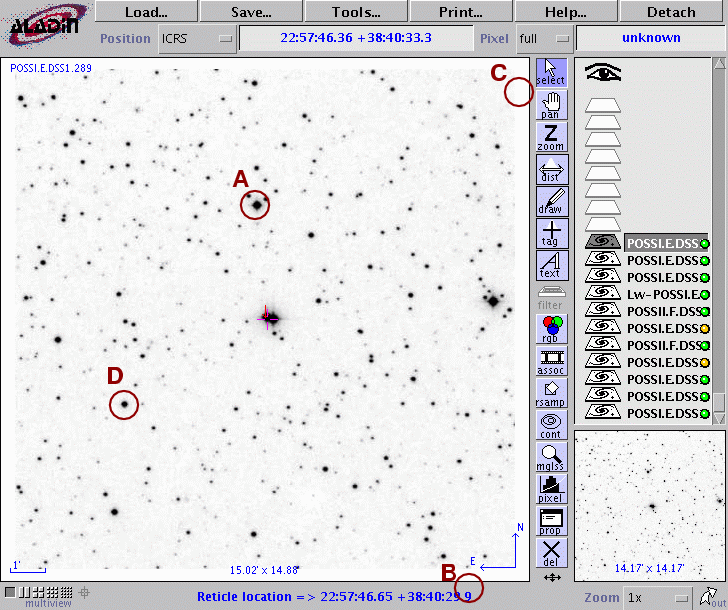
On the night of UT Jun 14, 2008, the SDSS Photometric Telescope ("PT" for short) took a series of exposures of the field around HAT-P1 . We detected most of a transit.
Notes from the night
This is a chart of the field. HAT-P1 orbits the is the bright star indicated by the crosshairs. The labelled stars will appear in later graphs.

The host star of HAT-P1 has a magnitude I=9.56 according to HAT-P-1b: A Large-Radius, Low-Density Exoplanet Transiting one Member of a Stellar Binary.
Following the procedures outlined by Kent Honeycutt's article on inhomogeneous ensemble photometry, I used all stars available in each image to define a reference frame, and measured each star against this frame. You can find the software package used to do the ensemble photometry online; it's free!
Most of the data was taken under a clear sky. The graph below shows the amount by which instrumental magnitudes from each image needed to be shifted to match the ensemble reference. On a clear night, this graph would show a straight horizontal line.
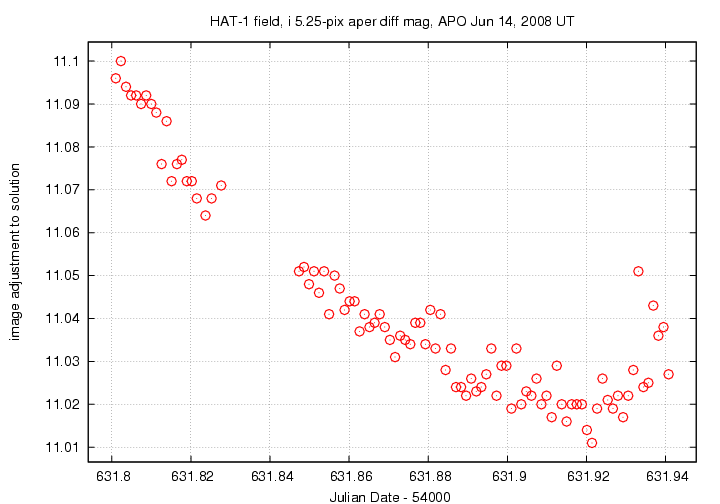
Below is a graph of the scatter in differential magnitude versus magnitude in the ensemble solution.
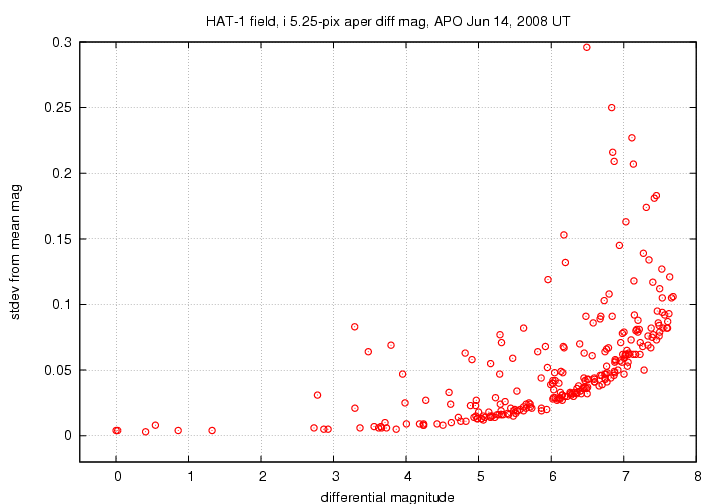
HAT-P1 is the star at differential mag 0.54; it shows a small excess of scatter than neighboring stars of the same brightness. The "noise floor" in these measurements is about 0.004 mag -- pretty good.
Below are the light curves for the target (green symbols) and four comparison stars in the field.
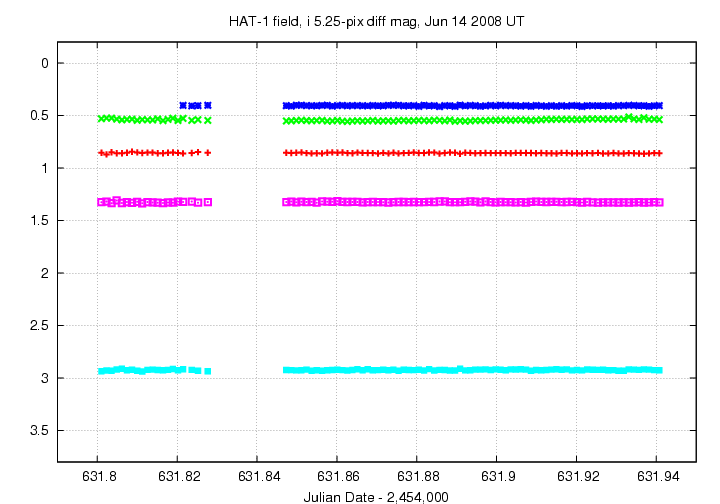
In this closeup, I have shifted the data for the comparison stars to be closer to the target for clarity.
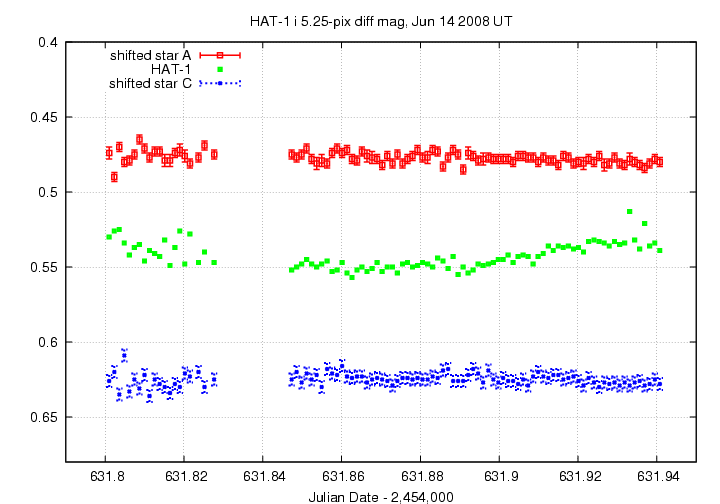
My eyeball examination of the light curve finds the ingress hard to measure; there's quite a bit of noisy data near the start of the run. The egress is more clear, at about 631.92.
Justin's notes for this system state that the ephemeris predicts ingress at 631.806, which at the time of the sixth image in the sequence. The egress is predicted to occur at 631.922, which is just about at my eyeball's estimate.
You can grab the measurements for your own analysis. Below is a table with three flavors of time, plus the differential magnitude of HAT-P1 and an estimate of the uncertainty in each measurement. I show the first few lines of the file to give you an idea of its format.
# Measurements of HAT-1 made with APO PT, Jun 14, 2008 UT. # Each exposure 25 seconds long in SDSS i-band; # Tabulated times are midexposure (FITS header time - half exposure length) # and accurate only to +/- 1 second (??). # 'mag' is a differential magnitude based on ensemble photometry # using a circular aperture of radius 5.25 arcseconds. # # UT day JD-2,450,000 HJD-2,450,000 mag uncert Jun14.80101 4631.80101 4631.80018 0.530 0.004 Jun14.80230 4631.80230 4631.80147 0.526 0.003 Jun14.80357 4631.80357 4631.80274 0.525 0.003
Last modified 07/02/2008 by MWR.